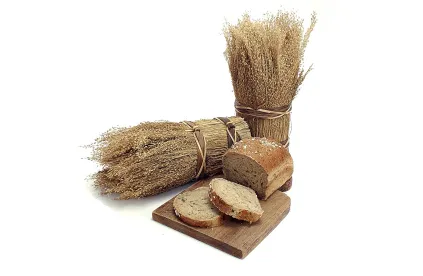For a variety of reasons, including celiac disease and autism diets, numerous people now follow a gluten free diet. Gluten is the term applied to a group of proteins found in grains such as wheat, rye, spelt, and barley. In 2013, the FDA issued a labeling rule for gluten free foods. That rule prohibited labeling of a food as gluten free if it:
-
contained a gluten-containing grain as an ingredient
-
contained an ingredient made from a gluten-containing grain that had not been processed to remove the gluten
-
contained an ingredient made from a gluten-containing grain, which even if processed to remove gluten still contained more than 20 parts per million of gluten
However, some food processes and/or ingredients, such as fermenting, break down gluten proteins such that currently available scientific testing cannot accurately detect and/or quantify the amount of gluten that remains in the food. Nonetheless, sufficient gluten may remain in the food to create reactions in sensitive individuals. Last year, the FDA issued a final rule detailing gluten free labeling requirements for fermented and hydrolyzed foods, or foods which contain those as ingredients. The compliance date for this final rule just occurred on August 13, 2021.
Since no currently available scientific testing can measure gluten content of fermented and hydrolyzed foods, the FDA opted for a records based approach. Companies who wish to make gluten free claims for fermented foods and/or foods made with hydrolyzed ingredients must create and maintain records which show that before the food/ingredient was fermented or hydrolyzed it:
-
did not contain gluten; and
-
the manufacturer has analyzed the potential for gluten cross-contamination during the manufacturing process; and
-
adequate manufacturing procedures are in place to make sure that there is no cross-contamination between the gluten free food and other foods/ingredients containing gluten
If a food contains more than one fermented or hydrolyzed ingredient, records must be kept for each such ingredient. Appropriate documentation could include Certificates of Analysis from ingredient suppliers, test results from individual ingredients, etc. For manufacturing procedures, the food safety plan should identify all potential sources of gluten contamination and create procedures to prevent cross-contamination. Records detailing compliance with the food safety plan procedures to prevent cross-contamination also need to be kept. These records have to be kept for two years after the food has been placed in interstate commerce. Requirements related to gluten free labeling are found in 21 CFR. § 101.91.
Finally, and perhaps for some, most importantly, what does this mean for the labeling of alcohol made from gluten containing grains? In responses made to comments to the final rule, the FDA agreed that the process of distillation should remove gluten. The 2013 gluten free labeling regulation already provided for gluten free labeling for food containing less than 20 parts per million of gluten. 21 CFR § 101.91(a)(3)(i)(A)(3). Distilled products can be tested for gluten and labeled as gluten free if they fall below the 20 parts per million threshold. 21 CFR. § 101.91(c)(5). Non-distilled alcohol beverages, like beer, could not be labeled as gluten free unless they complied with the gluten free-labeling rules, including being made with ingredients that don’t have gluten or which have been processed to remove the gluten (and when tested don’t have less than 20 parts per million of gluten).
Food manufacturers should already be keeping good records regarding all of their ingredients and processes. For those who manufacture and sell gluten free foods, proof that their ingredients and processes can back up their gluten free labels will be key.



 />i
/>i

